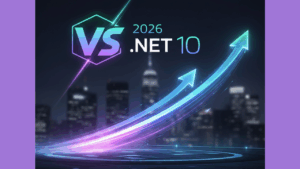Introduction
The artificial intelligence (AI) industry is moving at breakneck speed. Every week, a new model or tool shakes up the market. But one recent announcement shocked the entire AI community: OpenAI decided to go open-source. After years of guarding its models, the company released GPT-0 and admitted it had been “on the wrong side of history.”
This dramatic pivot raises big questions. Is OpenAI genuinely embracing open innovation, or is this a desperate attempt to stay relevant against rising competitors like GLM 4.5 and Kimi-K2? More importantly, how will this decision reshape the global AI race? Let’s break it down.
OpenAI’s Open-Source Shift
OpenAI was once the champion of transparency. In its early days, the organization promised to share research openly. But with the rise of GPT-3 and GPT-4, it shifted to a closed model strategy, citing safety and misuse concerns. Many critics accused the company of prioritizing profit over openness.
Now, with the release of GPT-0, OpenAI is reversing course. By admitting it was “on the wrong side of history,” the company acknowledges the growing momentum behind open-source AI. Competitors like Meta’s LLaMA family and Chinese labs have proven that transparency can accelerate innovation while building trust in the developer community.
This move is both bold and risky. On one hand, it signals humility and a willingness to adapt. On the other, it raises questions about whether OpenAI is leading or simply reacting to pressure.
GPT-0 Explained
So, what exactly is GPT-0?
GPT-0 is not the most advanced model OpenAI has ever built, but it represents a strategic test. Unlike GPT-4 or GPT-5, GPT-0 is designed for openness rather than performance supremacy. Developers can freely access, experiment, and even fine-tune it for specific tasks.
Some key features include:
- Transparency: Full access to architecture and weights.
- Accessibility: Lower compute requirements make it developer-friendly.
- Customization: Easy fine-tuning for niche use cases.
However, GPT-0 also comes with limitations. It lacks the sheer power of GPT-4 and struggles with complex reasoning compared to state-of-the-art competitors. Critics argue that OpenAI may have deliberately released a “safe” open-source model while keeping its strongest systems closed.
Still, the launch matters because it marks a cultural shift. OpenAI is signaling that it wants to rejoin the open-source ecosystem after years of criticism.
The Competitors: GLM 4.5 and Kimi-K2
The timing of OpenAI’s pivot is not accidental. Chinese AI labs are racing ahead with highly competitive models like GLM 4.5 and Kimi-K2.
- GLM 4.5 is widely praised for its balance of performance and efficiency. It offers strong multilingual support and has already gained adoption in research and enterprise sectors.
- Kimi-K2 is another rising star, optimized for context length and reasoning. Many in the AI community believe it outperforms OpenAI’s earlier models in key benchmarks.
The rapid progress of these models shows how global competition is reshaping the AI landscape. While OpenAI dominated headlines with GPT-3 and GPT-4, Chinese labs are now proving that they can innovate just as quickly—if not faster.
By releasing GPT-0, OpenAI may be trying to reignite developer trust before it loses its leadership position entirely.
Community Reaction
The reaction to OpenAI’s open-source pivot has been mixed.
- Excitement: Many developers welcomed the move, celebrating that OpenAI is finally returning to its roots. Open-source AI enables collaboration, experimentation, and rapid innovation across industries.
- Skepticism: Others argue that GPT-0 is too weak to matter. They see it as a token gesture while OpenAI keeps its most powerful technology locked away.
- Debate on Strategy: Analysts question whether OpenAI is truly embracing openness or merely reacting to competitive pressure.
From startups to enterprise developers, the decision has reignited discussions about trust, transparency, and the future of AI governance.
Strategic Pivot or Desperate Move?
The big question remains: Is this a smart strategy or a desperate act?
On one hand, this pivot could be strategic brilliance. By rejoining the open-source ecosystem, OpenAI can rebuild trust, expand its developer base, and ensure it remains relevant as competition heats up. Open-source adoption often creates powerful network effects that strengthen a company’s long-term position.
On the other hand, it might signal desperation. OpenAI once defined the cutting edge. Now, it seems to be reacting to Chinese labs that are already ahead in benchmarks and adoption. By releasing GPT-0, OpenAI risks being seen as playing catch-up rather than leading.
This is where the role of a fractional CTO becomes critical. For businesses deciding which AI technology to adopt, a fractional CTO can help evaluate whether GPT-0 has practical value or if competitors offer better long-term potential. Companies must carefully assess performance, scalability, and openness before committing to an AI strategy.
What This Means for the Future of AI
The decision to open-source GPT-0 has far-reaching implications:
-
The Open-Source Movement Gains Strength
OpenAI’s pivot validates the growing trend toward openness. If even the industry’s most secretive player changes direction, it reinforces that the future of AI may be more transparent than closed.
-
Competition Will Intensify
With Chinese labs innovating at record speed, competition will drive faster improvements. The global AI race is no longer about one company but about ecosystems competing for dominance.
-
Developers Win
More open-source models mean more freedom for developers, startups, and enterprises. From cost savings to customization, access to open AI tools can democratize innovation worldwide.
-
Shifting Balance of Power
The balance of power in AI is tilting. While OpenAI once had a near-monopoly on hype and attention, its competitors are now gaining ground. The industry’s future will depend on who adapts faster.

Conclusion
OpenAI’s decision to release GPT-0 is more than just a product launch—it’s a signal of change. The company admitted it was “on the wrong side of history” and is now trying to reclaim relevance in a rapidly evolving market.
But the question remains: Is this a strategic pivot or a desperate attempt to stay in the game?
The truth likely lies somewhere in between. OpenAI’s move is both a recognition of competitive pressure and a step toward greater transparency. Whether it succeeds will depend on how well the company balances openness with innovation.
For businesses and developers, the shift is a reminder that the AI race is far from over. Staying informed, adaptable, and strategic is key. This is where insights from a fractional CTO become invaluable—helping companies navigate uncertainty and choose the right tools.
At the end of the day, one thing is clear: the open-source movement is reshaping the future of AI. And as platforms like StartupHakk highlight, this pivot could be the turning point that defines whether OpenAI regains leadership—or fades into the background.




